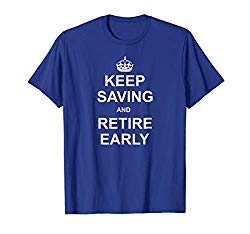The American Auto Loan Crisis
 Americans collectively owe approximately $1.35 trillion in auto loan debt. Trillion, with a “T”. We’ve heard the constant drumbeat of the student loan crisis for a long time now, and rightly so. Total student loan debt in America is even higher, at approximately $1.53 trillion. Both of these numbers are shocking and depressing to me.
Americans collectively owe approximately $1.35 trillion in auto loan debt. Trillion, with a “T”. We’ve heard the constant drumbeat of the student loan crisis for a long time now, and rightly so. Total student loan debt in America is even higher, at approximately $1.53 trillion. Both of these numbers are shocking and depressing to me.
But here’s the difference, when someone incurs student loans they’re borrowing money to build up an appreciating asset – namely their brain, knowledge, and skills.
But when one borrows money for a car, they’re borrowing to pay for a rapidly depreciating asset, a box of metal who’s sole purpose is to get you from point A to point B.
The Crisis
American consumers incurred record monthly auto loan payments even before COVID-19 started. In the first quarter of 2020 new vehicle buyers agreed to an average monthly loan payment of $569. The average amount borrowed per loan also set a record high of $33,739.
$33,739 per loan. Insanity.
Nevermind that you can get a perfectly good used car that will have tons of life left for $10,000 or under. And if you insist on buying new you can get a Toyota Camry for $24,000, or even a Subaru Outback for about $26,000. But this is car-obsessed America, and we spend borrow the extra because we go big.
… big into holding debt for a depreciating object.
I Feel Quite Comfortable Actually
According to Melinda Zabritski, senior director of automotive financial solutions at Experian, consumers are quite comfortable with this.
As this CNBC article details:
The larger loans and the higher monthly payments reflect a market where new vehicle prices have increased, especially for pickups and SUVs, which sell at higher price points. “Consumers have become comfortable with it,” said Zabritski. “If they weren’t, we would see consumers go back to smaller, less expensive vehicles.”
So consumers have “become comfortable” with shelling out $569 a month and borrowing $33,739 for a car, as COVID-19 has shut down businesses, destroyed jobs, and punched the economy in the gut.
The unemployment rate is approximately 8.4% and there are about 13.6 million Americans out of work. The stock market is smoking some special blend of meth and weed combined and somehow oblivious to it all.
Yes my friends, this is a perfect time to pay $33k for a depreciating object that you could get for $8k, and in the process borrow money to do so. And better yet, why not take a 7 year loan, it’s fun!
When a site that celebrates all-things-car like Jalopnik even admits things are out of control, you know there’s a problem.
House Of Car Loans
 When COVID-19 lockdowns began and the economy started slowing many experts agreed that this house of auto car loans would start to crumble. After all, at the end of 2019 more than 7 million Americans were 90 or more days delinquent on their auto loan payments. Those delinquencies totaled nearly $66 billion.
When COVID-19 lockdowns began and the economy started slowing many experts agreed that this house of auto car loans would start to crumble. After all, at the end of 2019 more than 7 million Americans were 90 or more days delinquent on their auto loan payments. Those delinquencies totaled nearly $66 billion.
Official data on things like this are always lagging behind, but as of July a report from credit bureau Transunion shows that 6.16% of auto loan accounts are now “in hardship”, an increase from only 3.54% in April.
The banking industry is bracing itself, and in May Wells Fargo sent letters to hundreds of auto loan dealerships informing them that they were being dropped as a customer.
Nobody can predict what will happen, but the numbers along with an unknown COVID situation indicate a possible massive wave of auto loan defaults on the horizon.
Where’s The Problem?
Count on me to find maps.

Source: Autowise
The Brookings Metropolitan Policy Program has this map showing the percentage of people who have a car loan in major metropolitan areas across America.
Lastly the Urban Institute has this great interactive map that allows you to check the auto loan delinquency rate in every county in America, among other things. I posted about this mapping site a few years ago and as you can see it also has maps for medical debt, student loan debt, and overall debt.
This is a snapshot of the percentage of people who are delinquent on their auto loan:
As you can see the South isn’t doing so well. Interestingly, if you choose the “Share with auto loans” option on the left the map displays the percentage of people who simply have an auto loan. It looks like this:
As a geographer and keen student of sociology I’m fascinated by geographic patterns, and this map had me scratching my head. Look at New England. There’s a corridor from western PA up to Maine where everyone seems to have an auto loan.
My only guess would be the harsh winters in most of those areas make people feel like they “need” one of those $40,000 Ford SuperDuty Pickups, which they most likely need a loan to purchase. If you have a better guess please leave it in the comments section.
A Key Part Of The Big-Three Team
As I’ve said time and time again, when it comes to spending less to get to financial independence, the flavor of spending matters. Sure, foregoing your daily or even weekly toxic, unhealthy, sugar-bomb Starbucks super-duper iced frappucino will save money. But eliminating the “latte factor” alone will not get you to financial independence.
Saving as much as you can on the big three will. And the big three, as a reminder, are housing, transportation (aka car for most) and food.
So when it comes to those three, here’s the situation:
Standard American: 2750 sq. ft home, $33,739 car loan at $569 a month, and eating out multiple times a week or even day (pre-COVID).
Aspiring FI American: Modest home (1500 sq. feet), perfectly fine used car for $10k or less, and cooking most meals at home.
If you convert from the first to the second and invest the boatloads of extra cash that will result, you’ll get to financial independence.
Trust me, it works.














































There’s a retired auto dealership general manager on YouTube doing videos on how dealerships make their money. He and his son also have a free set of videos on how to buy a car. Ray and Zack Schefska with Your Auto Advocate.
And the famous YouTube channel by the charismatic Scotty Kilmer explaining which cats are and are not money pits.
Back at the beginning of May I bought a new 2019 Honda CRV. LX AWD for $20,800 plus TTL for a total around $22,800. Good to go for another 8-10 years.
I’ll have to check out those YouTube vids, thanks for that. And good deal on the Honda, that thing should last way more than 10 years.
All cats are money pits. That’s fact.
I think spell check got ya – HA! But maybe cats and cars are money pits… hmmm
Dave – The interesting part about this article is I’ve been reading some version of this story for the last five years. I think all the data is right, yet this insanity continues!
The weird push/pull of this is what happens with car inventory and car pricing. The ever moving goalpost on mileage standards (along with other labor/material input costs) keeps increasing the cost of new cars. This is keeping the prices propped up on used cars and lenders in a decent position even if they repossess the car. I thought we were at the breaking point a couple years ago and Hurricane Harvey pulled hundreds of thousands of cars out of the country’s inventory, and this continued. Now the car plants were shut down for a few months, removing some of the inventory. The massive Volkswagon emission scandal whacked almost 100,000 cars out of inventory. There could be another unknown even that does something similar.
The only way this insanity starts to be curbed is if/when repossessions go to market and the used car auctions actually have falling prices. I keep thinking it’ll happen, yet it doesn’t. I am also casually in the market to replace my main vehicle with 241,000 miles on it and there is zero softness in used cars. It is even difficult to get a private sale car because dealers and the money losing Carvana are paying up for used cars.
Last comment, this as the former banker: The car loan portfolio will never have the same type of impact on the industry that the home loans did. Car loans, even at their worst (84 months), are returning 12% of the principal balance per year and are secured by an asset that’s easy to liquidate. A prime car loan is a pretty quick repossession and liquidation through the auction houses for 70-100% of the remaining loan balance. Compare that to a home loan or commercial real estate that can take ninety days to a year and a half to go through the foreclosure, possession, repair, and sale process with a lot of expensive attorneys and real estate brokers along the way. With a car loan you pay a repossession company, a couple hundred dollars to the auction house, and sell the deficiency debt over to a collection agency and redeploy the dollars into a new loan all within a few weeks.
Maybe one day the country can get over their peak home bloat and four figures in monthly payments for two cars in the driveway (since the garage is packed full of crap).
Take care!
Well, you obviously know way more about this subject than I do 🙂 Thanks for the great comment and insight. Stepping back from the details, I’m just fascinated by a country full of people who claim it’s impossible to get ahead, yet unnecessarily buy $33k vehicles with 7 year loans. When an $8000 vehicle will perform all of the same duties. Vanity and personal desires have no end, and derail people so much they can’t see it.
Thank you!
It’s also not so much the price as the people who constantly churn vehicles. I’m not dogmatic about vehicles and if someone wants to buy a $35,000 vehicle, drive it for 10-15 years, and still have a residual value of $3,000 to $5,000 at the end of that ten to fifteen years, good for them. $3,000/year or less isn’t a horrible cost for the average person. It is the horrible constant churning of vehicles, especially with a dealer making a margin on both the sale and trade in, interest carry, and state taxes/fees that just eat the average American’s wallet alive.
Yep, the churn is the key thing that kills people. Most vehicles these days are built so well they should all make it to 200k miles if taken care of. But the example you gave of the $35k SUV being kept for 10-15 years is the minority. People want new bells, whistles, and to try to impress others on the road who they’ll never meet.
My conclusion is that when people remark about how it’s impossible to get ahead, they mean how hard it is to sustain a lifestyle they believe people who are more successful/rich than they are do. Financial independence alone has little appeal if it doesn’t make them appear better than they already are.
We have a winner!! The nail has been hit on the head, great comment. And the lifestyle they’re complaining about not being able to attain is one they see on Instagram and social media, or on stupid Kardashian reality TV shows.
Dave thanks as always for mapping it out. I had no idea that auto loans were in the T T T Trillion dollar range and are close to the amount of student loans people have. I will say that in most of America if you don’t have a car you can’t get to your job and work. (Teleworkers and mustachians aside). And not everyone with an auto loan is financing a new SUV. One of the GovWorkers works with low income population and they almost all have shitty loans on shitty cars and no good options on getting out of that cycle.
Most people who live in big cities can actually get by without a car, or at least they can buy something small and reasonable. Except for many in NYC, they choose not to. And growing up in Balto City I realize that there are many forced to take out crappy loans to even get a modest $8,000 car, but that’s not the bulk of whats driving these numbers. When you have an average of $33k per vehicle it’s obvious that people are buying ridiculously priced vehicles when they could be getting something reasonable that performs all the same duties, and gets better gas mileage to boot. Yet they claim they can’t get ahead. My area (DC) has the highest incomes in the nation – every household is a 100k + household. Yet most are in debt. And you always see not one, but two $35-$40k SUVs in their driveway. The upper middle class in America has been growing like mad as I showed in a previous post and that’s what’s driving these crazy numbers.
I also had no idea that auto and student loan stats were so close! I wonder then why there is so much outrage about accruing debt for higher education but next to none for acquiring private transportation. Because the first isn’t considered as much of a choice as the latter? I’m curious!
Wow! Just freaking Wow! I just don’t get it at all, but what do I know? Great map tools as always, Dave.
The best part of this post is the ‘Standard v. Aspiring FI American’ snapshot. I’ll use this on a go-forward basis whenever someone asks me how I became FI in my 40s. And I can corroborate your claim – it does work!
Yep, I tried to sum it up as succinctly as possible there. Save on the big three and you’ll win, period. So easy on paper, yet so many want “all the big and expensive things”
These are the type of stats that should clearly show the health of an economy, good digging Dave. How does it look on the housing side of things?
Haven’t looked at housing as far as debt is concerned but as stopironingshirts commented it’s far more complex – especially when it comes to defaulting. Bottom line is most houses appreciate, ALL cars don’t. A loan on a depreciating object that you can easily buy a used version for at 1/5 the cost is just crazy. But America is infatuated with cars and car culture, and I don’t see that changing.
I was driving a $7,000 2008 Infiniti until I sold it the other day. I’m all about used cars but with my net worth I draw the line when the odometer goes over 200,000 miles. It still drove great though. Now I’ve got a 2017 Infiniti I bought from Vroom for $22,000. Like every car I’ve owned, I paid cash. The crazy thing is this Infiniti listed for right at $50K in 2017 when it was new. Now with 25,000 miles on it I paid less than half price. I just can’t see paying double when slightly used is half price even if I’m past worrying about the cost of cars. I agree $10,000 will buy a pretty good car. But I splurged a little and it is such a sweet ride! I didn’t do that before I became FI, or I might not have gotten here.
You mentioned that Infinity score on a previous post of mine – great job. So so true, you’re basically getting the same vehicle w/out the new smell. It’s just the smart thing to do.
I couldn’t agree more that a new vehicle is the worst investment possible Dave!
Yet, the auto makers have brain washed people into monthly payments and upgrading to the latest model every three years or so. Supposedly the new vehicles are “safer and more reliable”. And now with record low interest rates, that new car might even be less expensive (per month) than your current ride. Go figure…I wrote a post whether people should buy a new car before retiring. The sad reality is that depreciating asset has become a status symbol.
Brainwash is a great way to describe it Shannon. Americans are brainwashed on ridiculous wealth-draining status symbols
dude, it killed me to pay 22k for a new car back in ’14. i’ll keep it for 10-15 years until rust kills it but these prices still chafe me. i’m so glad we paid off our 98k house. can you believe we got that mansion for 98? someday we’ll live where there is no snow and i’ll own a moped.
I boggles my mind that you paid 98k for that house. Wow. I mean, the house I grew up in Baltimore sold for $95k a few years back, but it’s in a ghetto where literally people are routinely murdered and crack pipes and syringes turn up in the front yard every day. You got a steal, and I love stone houses.
Interesting data set Dave! Where I live there’s a decent number of people who get auto loans to buy fancy euro-brand SUV’s. That said, what’s with amount of auto loans the North East? Wow!
People are too car obsessed. I’m pretty darn happy with my 9 year old Honda that I bought used. No loan, and it’s a great car.
Does it bother me that others are driving fancy brand new vehicles? Nope! I test drove new cars before I bought my current can, and I wasn’t impressed.
Assuming you take care of it which I’m sure you do, that Honda will likely give you another 15 years if you want it to. Those things last forever.
These numbers blow my mind. It’s part of why I get skeptical whenever I hear lines about Americans “struggling” to get ahead. No doubt some are, but most parking lots seem to indicate that people have just made poor financial choices.
I think about cars in terms of what else I could buy with that money. Instead of a $30,000 car, I could go on probably six European vacations. I could buy a pair of designer shoes every single month forever and still come out ahead of most people’s car payments. Of course I invest that money instead, but it puts the idiocy in perspective for me. And whenever I do splurge on something like that, I remind myself that I drive a 2002 VW Golf with broken air conditioning and a driver’s side window that doesn’t go down.
Ha, love it! I went through most of my FI journey with junker cars. They worked, they got me from A to B and didn’t break down. But AC? Sometimes. Broken windows etc? Sure. I’m not a demandy person, another trait needed to get to FI. Sounds like you aren’t either 🙂
I bet New England has more new cars than other areas because the salt kills cars quicker. Easier to drive a 20 year old Honda in California than New England.
Also, I’m curious how the median numbers stack up relative to the mean.
Interesting point about the road salt. Yes it’s bad for the exterior and metal and probably causes corrosion over time, but not sure it affects the engine and working parts. I’m willing to be wrong on that though. That said, so many people would not put up with a car that has a patch of rust, that would be an automatic no. I had cars with dings and rust and drove them proudly, and became rich in the process. As for the mean vs median, I suspect the mean is way higher once you throw in crazy people buying $150,000 porches and ferraris. Those big purchases would have to skew the mean up quite a bit.
I’m with you, Dave, and the other posters: the figures are pure insanity! I’m not a car person myself and am very happy car share services exist where I live for when I can’t or don’t want to bike. And I’m lucky that’s so, because about the only cars I ever see and sort of “lust” after are generally the most expensive ones, namely any Tesla or Audi. I’m a happy pedestrian in the street but not in my tastes!
That said, I can’t help but think the phenomenon is due to a few factors: 1) every third television commercial or billboard is to hawk trucks and SUVs or other types of vehicles; 2) the presence of so many SUVs and trucks begets more of them on the road due to what amounts to (piece of anatomy)-envy; 3) or, more charitably, having a large, expensive vehicle just becomes the norm, a reflex, and eventually just what one buys especially for one’s family’s safety; 4) people drive longer and longer distances, especially to travel to and from work and want to be comfortable.
The last point is a very interesting one. It turns out that people look at commuting in a car less as a horrible thing to endure than one would think. A big reason why people “put up” with long commutes is because it’s actually one of the few moments in the day where the driver is alone and can reclaim some time for him/herself, listen to whatever he/she wants, and just be with his/her own thoughts. Having a sweet, if expensive, ride accentuates that pleasure.
The SUV craze is and has always been an arms race. Everyone else is driving bigger vehicles, so to protect myself I need a bigger one too. Then others need to match it, and so on and so on. I strongly believe if Americans were allowed to buy armored tanks they would. There’s no end to it, and we all suffer and die as a consequence, as the data about pedestrian deaths from SUVs clearly show, not to mention the horrible consequences for the planet from poor gas mileage.
Your last point rings true, I have a friend in Colorado who drives 1 hour each way to work. But he has no traffic, its an empty highway since he lives in a small town. He says it’s his 2 hours of solitude every day away from the noise of his kids so he can listen to podcasts. I can see that as valuable. Problem is, most folks in large cities with 2 hours in a car everyday want to think its their “me time”, but due to traffic it’s really just another stresser that causes road range and anxiety. Thanks for the great comment!
The bit about Americans buying armoured tanks made me laugh, in large part because it seems so true!
Dave, very nice article….and I would like to expand upon it if you permit. First I laugh when the national media states: “Subprime loans are in default…..” What they fail to mention is the hidden hedge fee that many dealerships/lenders use to conceal the true interest rate that the consumer is paying. How can we feel sorry for a lender that collected $3,000 upfront on the loan is prepaid interest and is then charging 24%?
Great point!
I bought a used car two weeks ago. A pretty 2015 Mazda3 hatchback. My Vibe has a bad head gasket and I was tired of dealing with being stranded places. I got a small loan and will have it paid off in less than 2 years. It boggles my mind people get a brand new car with a 7 year loan and then trade it in after 3 or 4 years. Simply bananas.
Sweet – those are awesome little cars! My friend has one and she loves it, she can fit her bike easily in the hatch with the seats down without even taking off her front wheel. And there’s still room for other stuff. That thing should last you a long time, and they’re so efficient and good on gas too!
It’s actually pretty surprising how narrow the range is for the auto loan monthly payment amounts from state to state. I’d think there would be more variance!
I know that the low interest rate environment has also pushed down auto loan rates (and enabled some of those crazy 7 year loans), I’m guessing that plays into the growth of the total debt quite a bit. $1.35T really is an enormous amount of money for a bunch of depreciating vehicles.
What’ll be really nuts is if the same thing that is happening to the business suit happens to commuter vehicles: the suit is getting crushed as folks aren’t sitting in an office doing formal presentations in the same way anymore. If remote work sticks around after COVID to a large degree, why would you need a business suit…or a fancy new car to commute in?
Oh and PS: the huge drop in oil price (and then gas) from the first decade of the millennium has no doubt fueled plenty of expensive vehicle buying. If you think of total transportation cost as a fixed amount, when less of it goes to fuel, more can go to the vehicle.
Yep. Gas is $2.00 a gallon, and while you’re waiting to fill up you can go inside the quickie mart part of the gas station and see a 20oz bottle of water for $2.00. So bottled water is 6.4 times more expensive than gas. INSANE
“What’ll be really nuts is if the same thing that is happening to the business suit happens to commuter vehicles”
I agree it would be nuts – meaning it’ll would never happen. Americans are too car obsessed and frankly too lazy to try to get anywhere under their own power, even if their destination is a quarter mile away. So even if we went 100% telework all the time Americans will still use (and claim they need) their cars for everything else.
My name is Hilton I offer loan at affordable interest rate, risk free if you’re interested contact my email: excelling.plc@gmail.com
Those who have money will put themselves and their children in the very best, latest, biggest and safest car they can afford.
As the post clearly highlights those who don’t have the money will do the same, thus the debt crisis.
Sometimes people prioritize their safety over money. I personally buy the best car I can afford with zero percent loans with the longest term I can get and no high fees. I get quotes from several dealers so I don’t overpay on the base price.
Lockdown led to many problems, especially people who availed a two wheeler loan or a car loan. Though interest rates were stopped for a span of time, customers had faced severe problems in repaying as they had lost jobs. Hope everything comes back on track as soon as possible.
Yep, which really shows why it’s best to avoid taking out a loan on a rapidly depreciating object.